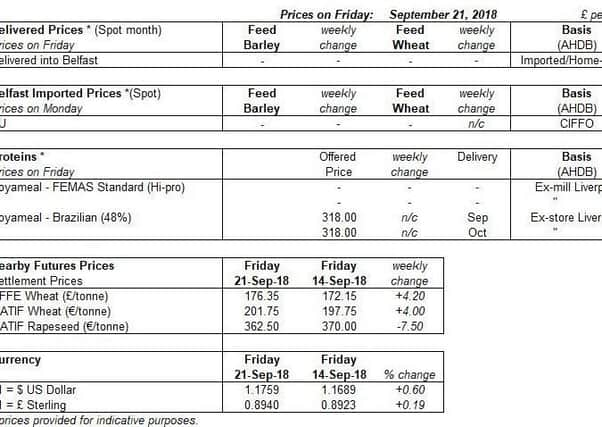MI Northern Ireland Market Report


Global wheat prices lifted last week, pushed up by concerns over the impact of frost damage in Australia and potential for lower Russian exports.
If confirmed, both these factors could further tighten global supplies of exportable wheat. There was support for EU feed grain prices as the Commission reduced maize yield forecasts. US maize futures also lifted towards the end of the week after stronger than expected US export sales.
Advertisement
Advertisement
At an EU-28 wide level, grain maize yields are now forecast to be down 5% year on year by the EU commission due to further confirmation of the impact of dry weather this summer. This is 1% down from the August MARS report and could reduce feed grain supplies within the bloc.
Wheat crops in West Australia and parts of Victoria may have suffered frost damage last week. September is a critical month for yield formation in Australia and wheat production in the country is already forecast to fall to an 11 year low due to ongoing dry weather.
Russian wheat exports this season may not reach as high as previously forecast, according to SovEcon. The analytics firm trimmed its forecast from 33.9Mt to 33.0Mt on Friday. Although this falls below the latest USDA projection (35Mt), it is above the end-August forecast from the International Grains Council (30.7Mt). There’s nervousness about Russian export potential this season due to reduced potential for exports from other key countries.
New analysis by AHDB suggests that a decline in bioethanol demand does not alone appear to drastically change the UK wheat supply and demand outlook for 2018/19, when looking at historical usage with wheat production and consumption scenarios.
Advertisement
Advertisement